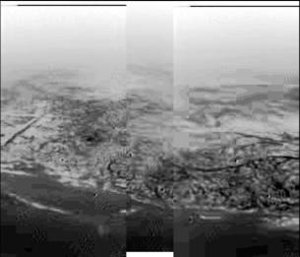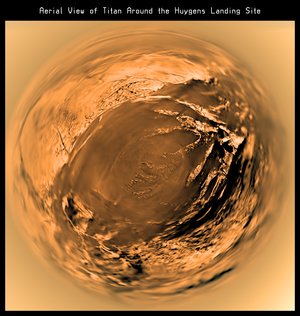Accept all cookies Accept only essential cookies See our Cookie Notice

About ESA
The European Space Agency (ESA) is Europe’s gateway to space. Its mission is to shape the development of Europe’s space capability and ensure that investment in space continues to deliver benefits to the citizens of Europe and the world.
Highlights
ESA - United space in Europe
This is ESA ESA facts Member States & Cooperating States Funding Director General Top management For Member State Delegations European vision European Space Policy ESA & EU Space Councils Responsibility & Sustainability Annual Report Calendar of meetings Corporate newsEstablishments & sites
ESA Headquarters ESA ESTEC ESA ESOC ESA ESRIN ESA EAC ESA ESAC Europe's Spaceport ESA ESEC ESA ECSAT Brussels Office Washington OfficeWorking with ESA
Business with ESA ESA Commercialisation Gateway Law at ESA Careers Cyber resilience at ESA IT at ESA Newsroom Partnerships Merchandising Licence Education Open Space Innovation Platform Integrity and Reporting Administrative Tribunal Health and SafetyMore about ESA
History ESA Historical Archives Exhibitions Publications Art & Culture ESA Merchandise Kids Diversity ESA Brand Centre ESA ChampionsLatest
Space in Member States
Find out more about space activities in our 23 Member States, and understand how ESA works together with their national agencies, institutions and organisations.
Science & Exploration
Exploring our Solar System and unlocking the secrets of the Universe
Go to topicAstronauts
Missions
Juice Euclid Webb Solar Orbiter BepiColombo Gaia ExoMars Cheops Exoplanet missions More missionsActivities
International Space Station Orion service module Gateway Concordia Caves & Pangaea BenefitsLatest
Space Safety
Protecting life and infrastructure on Earth and in orbit
Go to topicAsteroids
Asteroids and Planetary Defence Asteroid danger explained Flyeye telescope: asteroid detection Hera mission: asteroid deflection Near-Earth Object Coordination CentreSpace junk
About space debris Space debris by the numbers Space Environment Report In space refuelling, refurbishing and removingSafety from space
Clean Space ecodesign Zero Debris Technologies Space for Earth Supporting Sustainable DevelopmentApplications
Using space to benefit citizens and meet future challenges on Earth
Go to topicObserving the Earth
Observing the Earth Future EO Copernicus Meteorology Space for our climate Satellite missionsCommercialisation
ESA Commercialisation Gateway Open Space Innovation Platform Business Incubation ESA Space SolutionsLatest
Enabling & Support
Making space accessible and developing the technologies for the future
Go to topicBuilding missions
Space Engineering and Technology Test centre Laboratories Concurrent Design Facility Preparing for the future Shaping the Future Discovery and Preparation Advanced Concepts TeamSpace transportation
Space Transportation Ariane Vega Space Rider Future space transportation Boost! Europe's Spaceport Launches from Europe's Spaceport from 2012Latest

Peering Closer at Titan
Thank you for liking
You have already liked this page, you can only like it once!
Cassini continues its ground-breaking observations of Saturn's mysterious moon Titan, stealing another early peek at its haze-enshrouded surface.
The spacecraft was 29.3 million kilometres (18.2 million miles) from Titan on 5 May 2004 when the image on the left was taken through one of the narrow angle camera's spectral filters (centered at 938 nanometres) specifically designed to penetrate the moon's thick atmosphere. The image scale is 176 kilometres (109 miles) per pixel, an improvement in resolution of 30% over the images released on 6 May. Cassini's view of Titan now surpasses Earth-based observations in its ability to show detail.
The image has been magnified 10 times using a procedure which smoothly interpolates between pixels to create intermediate pixel values, and has been enhanced in contrast to bring out details. The mottled pattern is an artifact of the processing. The larger scale brightness variations are real. No further processing to remove the effects of the overlying atmosphere has been performed.
The superimposed coordinate system grid in the accompanying image on the right illustrates the geographical regions of the moon that are illuminated and visible, as well as the orientation of Titan - north is up and rotated 25 degrees to the left. The yellow curve marks the position of the boundary between day and night on Titan.
This image shows about one quarter of Titan's surface, from 180 to 250 degrees West longitude, and overlaps part of the surface shown in the previous Cassini image release. (That release also included a map of relative surface brightness variations on Titan as measured from images taken with the Hubble Space Telescope.)
-
CREDIT
NASA/JPL/Space Science Institute -
LICENCE
ESA Standard Licence

Possible volcanic dome on Titan

Huygens' view of Titan

Titan’s pebbles

Titan’s seas















 Germany
Germany
 Austria
Austria
 Belgium
Belgium
 Denmark
Denmark
 Spain
Spain
 Estonia
Estonia
 Finland
Finland
 France
France
 Greece
Greece
 Hungary
Hungary
 Ireland
Ireland
 Italy
Italy
 Luxembourg
Luxembourg
 Norway
Norway
 The Netherlands
The Netherlands
 Poland
Poland
 Portugal
Portugal
 Czechia
Czechia
 Romania
Romania
 United Kingdom
United Kingdom
 Slovenia
Slovenia
 Sweden
Sweden
 Switzerland
Switzerland

























